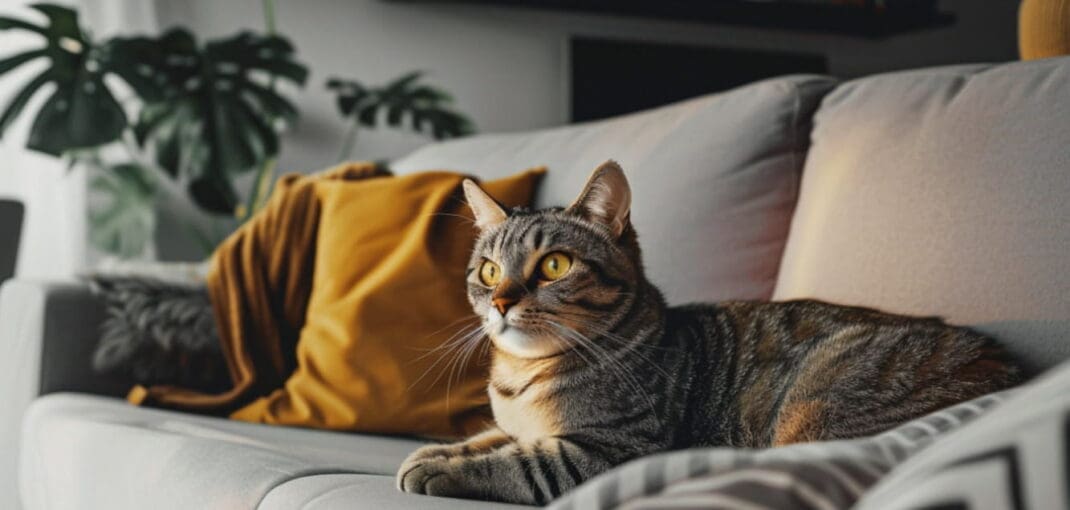Cats, like humans, need a balanced diet to maintain health and vitality. Two of the most important minerals that should be present in any cat’s diet are calcium and phosphorus. In this article, we will take a closer look at why calcium for cats and phosphorus in a cat’s diet, are so important, what are the symptoms of their deficiencies and excesses, and how to effectively manage their levels in the daily nutrition of our four-legged friends.
Calcium and phosphorus: the foundations of a healthy cat diet
Every cat guardian should pay particular attention to their pet’s diet, especially the content of two key minerals: calcium and phosphorus. Calcium for the cat, as well as phosphorus, not only support the formation of strong bones and teeth, but are also essential for the proper functioning of muscles and the conduction of nerve impulses, among other things.
The importance of calcium for the cat is fundamental. Calcium is a mineral that plays a key role in the body of every cat. Sources of calcium for the cat can be found in a variety of products, including classic and specialised foods that are tailored to meet the nutritional needs of cats at different stages of their lives, from adult variants to items such as junior or senior cat food.
Phosphorus’s role in maintaining a cat’s health is also extremely important and includes helping with calcium absorption and energy production at a cellular level, which is crucial for all cats. However, the balance between calcium and phosphorus is fundamental; an incorrect ratio of these minerals can lead to serious health problems.
Excess and deficiency of calcium in the cat: symptoms
Both a deficiency and an excess of calcium in a cat’s diet can be harmful. It is therefore useful to become familiar with the basic symptoms.
Symptoms of calcium deficiency
Calcium deficiency in the cat can have very subtle symptoms and develop slowly, making it difficult to recognise the problem early on. The most common symptoms include:
bone brittleness,
frequent fractures,
dental problems,
muscle tremors and spasms.
Symptoms of excess calcium
Excess calcium, although less common, is also dangerous and can lead to:
kidney stones,
heart disorders,
muscle weakness,
retarded growth,
inhibition of thyroid function,
soft tissue calcification,
fatigue and apathy.
The role of phosphorus in maintaining cat health
How to balance calcium and phosphorus in a cat’s diet? The ideal ratio of calcium to phosphorus in a cat’s diet should be between 1.2:1 and 2:1 and must always be chosen according to the specific physiological state of the body, life stage and health condition. It is important to choose products such as wet cat food with the correct phosphorus content to suit your pet’s needs. If you are not sure which products to go for, it is worth asking your vet for advice, How do I balance calcium and phosphorus in my cat’s diet?
Balancing the levels of calcium and phosphorus in a cat’s diet is crucial for its health and well-being. The ideal balance of these minerals ensures optimal development and maintenance of bone and dental health, as well as supporting muscle and nerve function. Both calcium for the cat and phosphorus in the cat’s diet must be supplied in the right proportions to avoid health problems associated with their excess or deficiency.
Calcium supplementation: when is it recommended?
Calcium and phosphorus supplementation may be recommended in various situations, especially when the usual diet does not cover the cat’s increased needs, as in the case of kittens, pregnant or lactating cats.
Calcium supplementation is mainly recommended for:
Low calcium levels in the cat, which can lead to hypocalcaemia, manifested by muscle tremors, nervous system or fractures. The BARF diet, which requires individual balancing of all nutrients, including vitamins and micro- and macronutrients, the appropriate levels of which are maintained through supplementation selected according to the findings of the individual animal.
Other pet diets that should be consulted with a specialist to avoid problems of deficiency and poor balance.
The role of phosphorus in the cat’s diet is crucial, so any abnormalities in the calcium-phosphorus balance should be consulted with a vet and a nutritionist in the first instance and the Carer should not take any supplementation on their own to avoid harming the animal.
Calcium and phosphorus supplements should only be used after consultation with a vet, who can recommend suitable products and their dosage based on the cat’s blood tests. It is advisable to use products recommended by specialists, such as vitamins and supplements for cats, which are safe and effective.
Safe sources of calcium and phosphorus in your cat’s diet: what should you know?
When choosing sources of calcium and phosphorus for your cat, there are a few key aspects to look out for to help ensure a healthy and adequate diet.
Phosphorus is found in most protein products, such as meat and fish. However, when choosing a low phosphorus wet cat food, it is important to pay close attention to product labels to ensure that the phosphorus content does not exceed recommended standards, especially in the diet of cats with kidney problems.
A diet with the right balance of calcium and phosphorus, is fundamental to the health of any cat. Regular veterinary checks and adjusting the diet to meet the changing needs of the cat at different stages of its life are the best way to ensure a long and healthy life.
Ensuring the correct levels of calcium and phosphorus in a cat’s diet not only supports its physical health, but also contributes to its overall wellbeing and quality of life.






